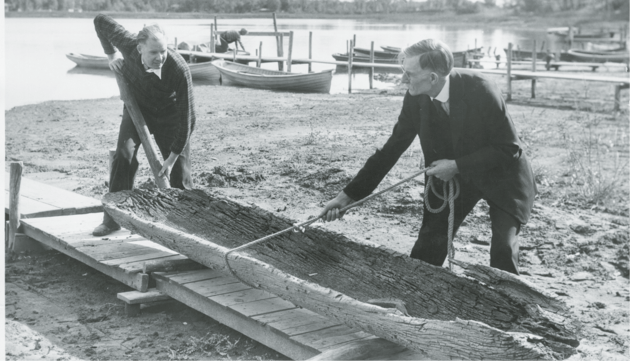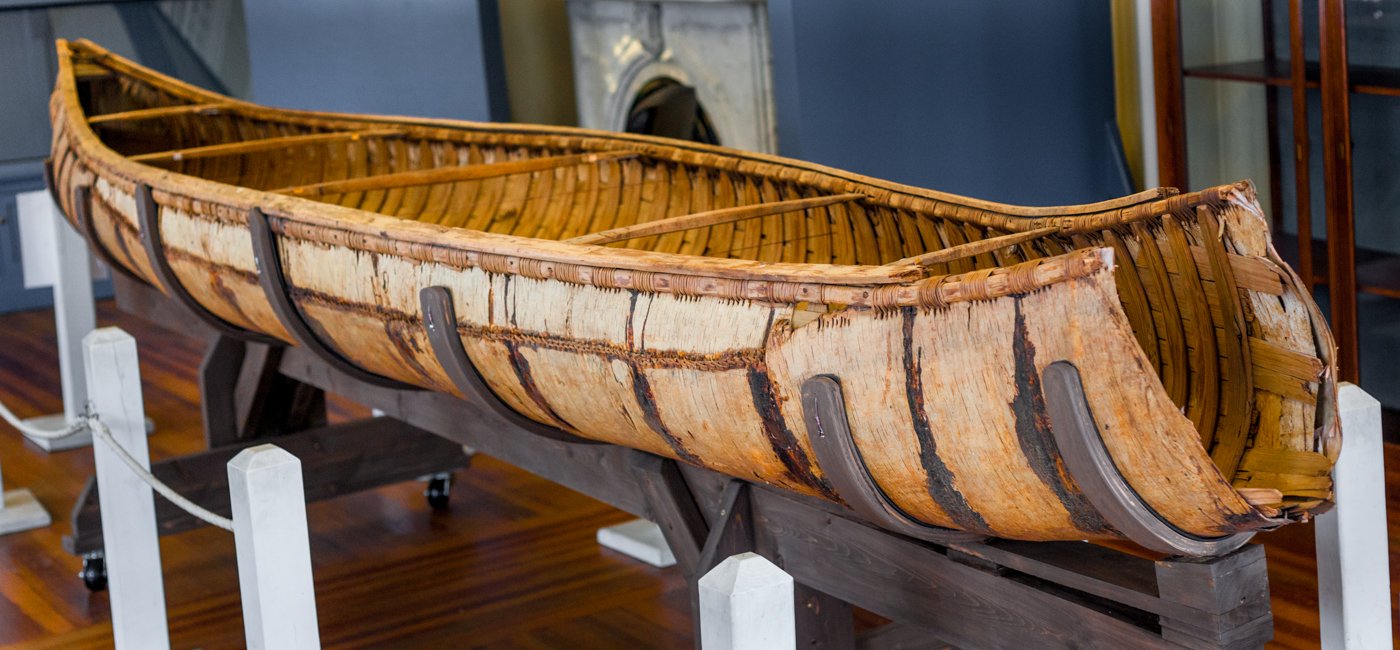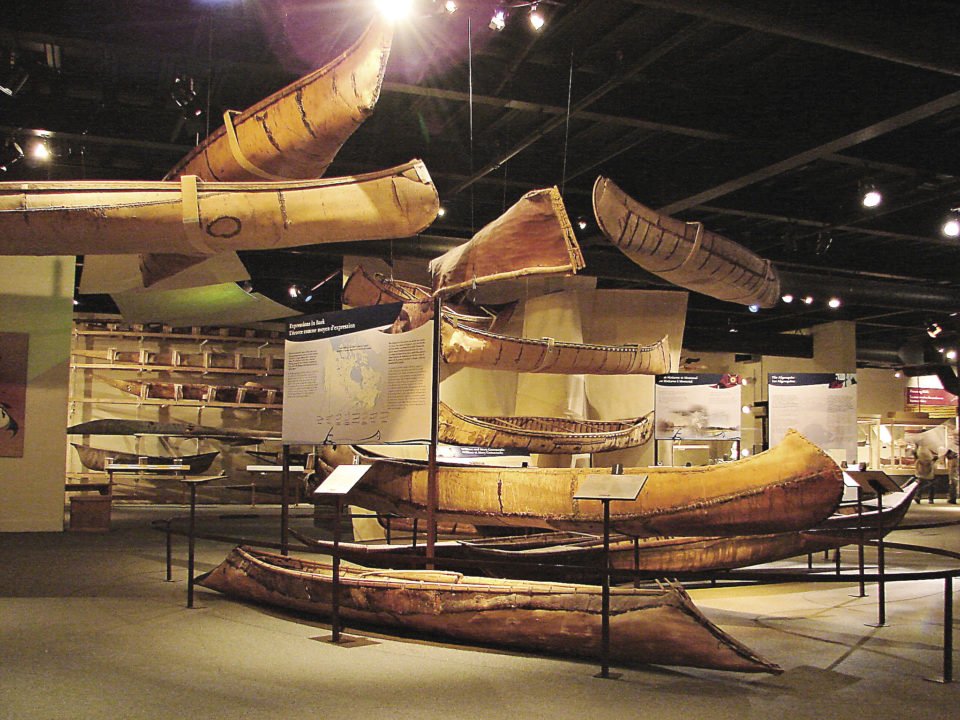For many of us, the word “canoe” brings to mind the historic birch bark ones first used by First Nations peoples and later by the French-Canadian Voyageurs and fur-traders. But it is Europe that lays claim to the world’s oldest surviving canoe.

Known as the Pesse Canoe, it was discovered in the Netherlands in 1955 and has been carbon dated as being built between 8040 BCE and 7510 BCE (10,059 to 9,529 years ago). Constructed in dugout canoe style from a Scots pine log, likely using flint or antler tools, it is nearly 10 feet long and 17 inches wide. The canoe, also considered the world’s oldest boat, is now on display at Drents Museum in Assen, Netherlands.
Another of the world’s oldest canoes is the Dufuna Canoe, discovered by a cattle herdsman in northeast Nigeria while digging a well for water. Made of African mahogany and rubbed with animal fat to prevent from cracking, the dugout was carbon dated to be about 8,500 to 8,000 years old.

Others on the oldest canoe list include the 8,000-year-old dugout canoe found in Zhejiang province in east China (Asia’s oldest canoe). In Northern Europe, the oldest canoe is in Denmark, dated back 7,200 to 6,900 years ago, while in the Baltic area, Germany has dugouts dating back 7,000 to 6,000 years.
Over here in North America, it is Florida that holds the title to having the world’s largest concentration of ancient canoes, the oldest dugout being about 7,000 years old. According to the Florida Museum, there are almost 400 recorded dugouts over 235 sites, ranging up to 27 feet long. Most were crafted from pine or cypress using stone or shell tools in the pre-contact era. An amazing rare find happened 19 years ago when 101 dugouts, most 5,000 to 3,000 years old, were found in Newnan’s Lake near Gainesville; after documentation and carbon-dating 53 canoes, all were reburied in the lake bottom.

In the Great Lakes region, the oldest dugout was found in Lake Mary, Wisconsin and dated around 2,000 years. Up here in our Northern Wilds country, Minnesota’s oldest is a 1,000-year-old dugout discovered in Lake Minnetonka and now on display at the West Hennepin County Pioneer Association.
But what about the birch bark canoes?
Well, two of the world’s oldest birch bark canoes, both over 220 years old, are linked to British soldiers, and housed in museums in Maine and Ontario.

The world’s oldest birch bark canoe is the Wabanaki Canoe, now on display in a museum in Brunswick, Maine. Built in the mid-1700s by people of the Wabanaki Confederacy, the 269-year-old canoe is 16.5 feet in length, built without nails or fastenings and has a stem strip made of tanned deer. As the story goes, a Maine sea captain received the canoe as a gift from the Wabanaki. In 1889, his family donated to the Pejepskot Historical Society. For decades it was stored in a barn before placed in the Pejepskot Museum and Research Centre.
The second oldest birch bark canoe—or rather its remains—is at least 231 years old and on display at the Canadian Canoe Museum in Peterborough, Ontario which houses the world’s largest collection of canoes and kayaks, numbering more than 600.
The birch bark canoe is almost 20-feet-long, with ribs poking out from the sides and a frame that is mostly disintegrated. Built in Canada in the 1700s and donated to the museum by its British owners in 2012, its exact origin and which First Nation created the canoe remain somewhat of a mystery, though it is believed to have been constructed near Quebec City. According to family lore, the canoe was owned by British soldier Lt. John Enys, who had arrived in 1776 in Quebec to defend Quebec City during the American War of Independence. When he finally returned to his home in Cornwall, England in 1788, the canoe came, too.
Speaking of the Canadian Canoe Museum, there’s a cool direct link with the Thunder Bay area. Apparently, the museum’s distinctive logo of a canoe and paddlers comes from the canoe pictograph found at Pictured Lake, located near Thunder Bay.
Did you know that Ely has the title of Canoe Capital of the World and is home to the Minnesota Canoe Museum? While a permanent facility is in the planning stages, in an article in the Star Tribune, journalist Scott Stowell writes the “organization’s vision includes showcasing historic birch bark, wood-canvas and cedar-strip canoes,” as well as canoe-related exhibits.
The museum’s current three canoes all have unique stories: the Arrowhead Journey birch bark canoe (made a 1,000-mile journey around perimeter of Arrowhead in 2009), the Mando racing canoe (cedar, ash and painted canvas built by Ontario’s Peterborough Canoe Co.) and the Detroit-to-Moscow Canoe (attempt to paddle from Detroit west to Moscow in time for 1980 Summer Olympics; ended in Lake of the Woods).
Should be noted that in addition to Ely, both Peterborough, Ontario and Eminence, Missouri claim to be the “Canoe Capital of the World,” while Atikokan in Northwestern Ontario promotes itself as the “Canoeing Capital of Canada.”




